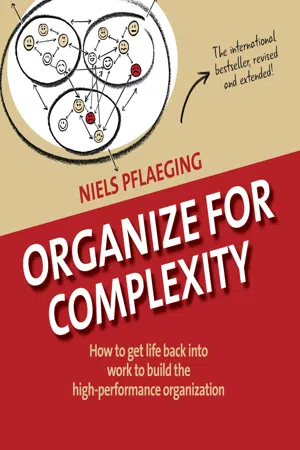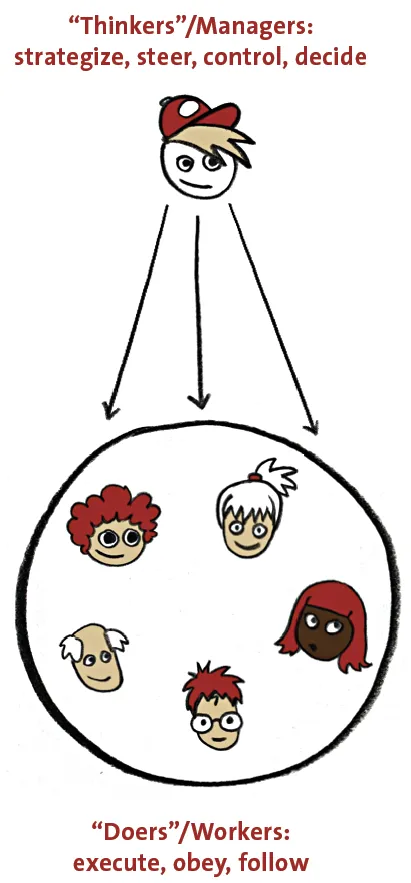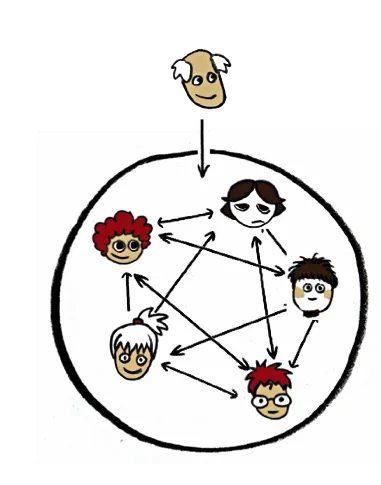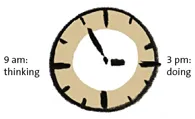
eBook - ePub
Organize for Complexity
How to Get Life Back Into Work to Build the High-Performance Organization
- English
- ePUB (mobile friendly)
- Available on iOS & Android
eBook - ePub
Organize for Complexity
How to Get Life Back Into Work to Build the High-Performance Organization
About this book
The long-awaited update for work and organizations in the knowledge age!
A book about complexity and work - and about how to deal productively with both.
A condensed introduction to the theory and practice of organizational high performance.
A manifesto for contemporary leadership and profound transformation in organizations of all kinds.
Frequently asked questions
Yes, you can cancel anytime from the Subscription tab in your account settings on the Perlego website. Your subscription will stay active until the end of your current billing period. Learn how to cancel your subscription.
At the moment all of our mobile-responsive ePub books are available to download via the app. Most of our PDFs are also available to download and we're working on making the final remaining ones downloadable now. Learn more here.
Perlego offers two plans: Essential and Complete
- Essential is ideal for learners and professionals who enjoy exploring a wide range of subjects. Access the Essential Library with 800,000+ trusted titles and best-sellers across business, personal growth, and the humanities. Includes unlimited reading time and Standard Read Aloud voice.
- Complete: Perfect for advanced learners and researchers needing full, unrestricted access. Unlock 1.4M+ books across hundreds of subjects, including academic and specialized titles. The Complete Plan also includes advanced features like Premium Read Aloud and Research Assistant.
We are an online textbook subscription service, where you can get access to an entire online library for less than the price of a single book per month. With over 1 million books across 1000+ topics, we’ve got you covered! Learn more here.
Look out for the read-aloud symbol on your next book to see if you can listen to it. The read-aloud tool reads text aloud for you, highlighting the text as it is being read. You can pause it, speed it up and slow it down. Learn more here.
Yes! You can use the Perlego app on both iOS or Android devices to read anytime, anywhere — even offline. Perfect for commutes or when you’re on the go.
Please note we cannot support devices running on iOS 13 and Android 7 or earlier. Learn more about using the app.
Please note we cannot support devices running on iOS 13 and Android 7 or earlier. Learn more about using the app.
Yes, you can access Organize for Complexity by Niels Pflaeging,Pia Steinmann in PDF and/or ePUB format, as well as other popular books in Business & Management. We have over one million books available in our catalogue for you to explore.
Information
Part 1. Complexity: Why it matters to work and organizations (Big time.)
Management, the social technology: Rise and fall of a brilliant idea
In 1911, Frederick W. Taylor published his landmark book “The Principles of Scientific Management.” He proposed his new brand of organizational science as nothing short of a “revolution” that would eliminate the productivity constraints of the industrial-age organization. Taylorism indeed achieved just that. Taylor became the founder of management as an organizational method that would give wings to the quest for efficiency of the industrial age.
What Taylor pioneered was the idea of consistently dividing an organization between thinking people (managers) and executing people (workers) – thus legitimating the management profession as that of thinking principals of the non-thinking human resources. Taylor also introduced functional division to shop-floor work. His concepts were soon decried as inhumane and non-scientific, his consulting methods as ineffective. But Taylor was a visionary with the dream of pacifying workers and managers through efficiency gains that would benefit all.

The division principle became the DNA of management, the social technology: hierarchical and functional division were widely adopted after Taylor´s death in 1915, and to great effect. His principles were later applied to non-industrial, non-shop-floor work – all kinds of work, in fact. Management, as we know it today, is not much different from what Taylor proposed a century ago. As we will see, however, command-and-control has turned toxic for both organizational performance and human/social advancement.
We call tayloristic management Alpha.
The price of simplicity: Three systemic gaps caused by management
First: The Social Gap
Hierarchical division and top-down control cause an erosion of social/group pressure and dialog, and a bias towards management by numbers and leadership by fear

Second: The Functional Gap
Functional division leads to narrow and fragmented responsibilities. It produces a need for managed/imposed coordination through process control, interfaces, planning, rules, standards, hierarchic power etc.

Third: The Time Gap
The division between thinking thinkers and non-thinking doers, between planning and execution, results in the need for managed/imposed roles, complicated IT, strategy, targets, forecasting, and planning

None of this feels good. None of this creates value for people, customers, or owners: the three gaps all lead to waste. That´s a high price for the illusion of control.
The historical course of market dynamics and the recent rise of complex, global markets
We call the graph shown below the “Taylor Bathtub.”
The industrial age brought with it a brief period of fast-growing, spacious mass markets with relatively little competition. Monopolies or oligopolies dominated, markets were dull, or sluggish. During that period, Alpha became the standard organizational model: because it was possible, for the first time in human history, to largely eliminate complexity from value-creation with the help of machines and standards. For this task Taylorism, or Alpha, was the perfect solution.
Those days are gone. High-dynamic value creation re-emerged around the 1970s, due to the rise of global, high-competition markets and the return of more individualized demand that made customization paramount and enabled “mass-customization.”

High-dynamic value creation, in turn, calls for an increase in the human part of problem-solving processes. Alpha has become a roadblock.
The dominance of high dynamics and complexity is neither good, nor bad. It‘s a historical fact.
* The terms dynamics and complexity will be used synonymously throughout this book, most of the time – for the sake of simplicity.
The difference between the complicated and the complex
Complicated systems operate in standardized ways. In complicated systems imprecision is diminished and non-objectivity and uncertainty are reduced as far as possible. Such a system can be described through non-ambiguous cause-and-effect chains. It is externally controllable.

Any high-precision machine is complicated: everything is done to avoid imprecision/to increase precision. A watch, for example, is calibrated to diminish mistakes and uncertainty. It is configured to supply objective data, certainty and a minimum of illusion.
Complex systems produce surprises. They have presence or participation of living creatures. They are living systems – that’s why they may change at any moment. Such systems are only externally observable – not controllable.

A complex systems’ behavior is non-predictable. In a complex system, it’s natural that there is a level of error, uncertainty and illusion that is much higher than in complicated systems. A complex system may possess elements that can operate in standardized ways, but their interaction would be constantly changing, in discontinuous ways.
To treat complex organizations as complicated systems is a fundamental thinking mistake, an over-simplification.
Consequences of complexity: The importance of mastery for problem-solving today
The only “thing” capable of dealing effectively with complexity is human beings.
What matt...
Table of contents
- How to use this book
- The same questions, everywhere...
- Part 1. Complexity: Why it matters to work and organizations (Big time.)
- Part 2. Humans at work: The secret ingredient (How to fulfill and capture human potential)
- Part 3. Self-organizing teams and the networked organization (From old design principles to new and better ones)
- Part 4. Organizations as systems: Designing for complexity (How any organization can become “fit for dynamics”)
- Part 5. Dynamic-robust networks for all: This is how you pull it off (How to anchor the “Beta” mindset within organizational structure)
- Part 6. Leadership in complexity: What remains of it, and what is needed (Practical recommendations for dynamic-robust leadership work)
- Part 7. Transform, or remain stuck: The way forward (How deep organizational transformation works. Really works.)
- Bonus chapter: “Management is quackery.” (An Interview)
- The rest. For digging deeper (How to continue the journey)